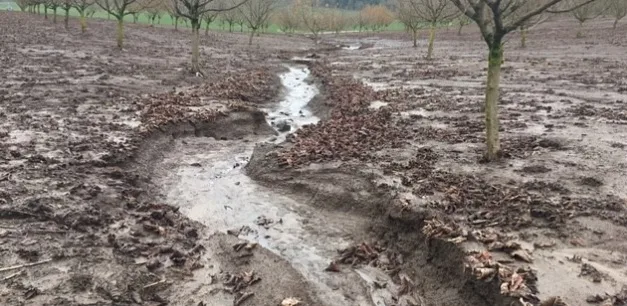Soil erosion poses several challenges affecting agriculture, construction, and the environment by depleting topsoil, harming water quality, and causing costly damage to infrastructure. To combat this issue effectively, it is crucial to employ soil stabilization techniques that provide a foundation for various purposes. This article delves into proven methods for preventing erosion, offering guidance across different sectors.
1. Assessing Site Conditions
An evaluation of site conditions is essential before implementing any soil stabilization strategies. Factors like soil composition, slope steepness, land usage patterns, rainfall intensity, and water table levels must be carefully considered to determine the right stabilization approaches and ensure long-term stability.
2. Utilizing Hydroseeding
Hydroseeding stands out as a method for vegetation-based soil stabilization efforts. This technique involves spraying a slurry mixture containing seeds, plant fibers (such as wood or paper mulch), tackifiers (for adhesion), fertilizers, and water onto vulnerable slopes—a practice commonly referred to as hydro mulching. This blend encourages the growth of seeds while also offering protection to the ground against elements like wind and rain. Hydroseeding speeds up the process of reinforcing the soil in vulnerable areas, helping preserve moisture and prevent soil erosion.
3. Terracing
Terracing is a method used on slopes to reduce runoff speed by dividing long slopes into shorter steps or levels with flat areas separated by retaining walls. Terraces enhance water absorption into the soil and decrease the surface runoff speed, preventing erosion. The varying flat sections also create localized catchment areas that are beneficial for farming on terrains.
4. Grading and Surface Roughness
Proper grading and surface roughening techniques involve adjusting slopes and adding features to disrupt water flow across surfaces. Techniques like earthmoving, contour plowing, ridge planting, furrowing, or mechanical roughening help decrease water speed, encouraging infiltration and soil retention. For instance, contour farming involves following natural land contours during tilling to create ridge structures that divert water flow and combat erosion.
5. Geotextiles
Geotextiles are textile materials designed specifically for soil stabilization purposes. Typically made from polypropylene or polyester substrates, these fabrics possess filtration, separation, and drainage abilities that enhance soil stability while promoting plant growth. Geotextiles can be placed in layers on slopes that are at risk of erosion to increase stability by containing soil particles and providing erosion resistance until plant roots establish themselves.
6. Nature-Based Engineering Methods
Nature-based engineering methods blend elements with engineering techniques. These methods utilize living materials like plants (such as willows) and recycled/coconut fiber products (such as coir logs) to create permanent solutions for stabilizing slopes. These natural reinforcements trap sediment while encouraging plant growth due to their ability to aid in long-term slope erosion prevention.
7. Water Drainage Management
Effective water drainage management is crucial for preventing soil erosion in projects. Surface drainage systems (diversion channels) collect surface runoff efficiently before it can erode exposed land areas. Another approach involves installing subsurface draining tubes to maintain moisture levels while preventing excessive saturation that can lead to instability.
8. Utilizing Mulch
Mulching is a commonly adopted method for stabilizing soil, involving the application of a layer of organic or inorganic material like straw, wood chips, or gravel on the surface. Mulch serves several purposes, such as reducing water runoff by absorbing and retaining moisture, protecting against erosion by shielding soil from the impact of rain, and regulating soil temperature to support healthy plant growth. Using mulch not only helps to prevent weed growth but also serves as a protective barrier for newly planted vegetation.
9. Planting Native Species
When it comes to soil stabilization and erosion control, incorporating practices like revegetation and planting native species can make an impact. Vegetation with natural root systems can bind soil particles together, improving stability and reducing erosion from wind and water. Choosing species adapted to climate conditions enhances establishment success rates, requiring less maintenance for irrigation and fertilization. The varied root structures of plants also aid in water infiltration into the soil.
Conclusion
Professionals can reduce erosion risks and preserve resources by combining these effective soil stabilization techniques while creating sustainable environments. Thoroughly analyzing site conditions is crucial for selecting stabilization methods that cater to each project’s requirements. Techniques such as hydroseeding, terracing, grading, surface roughness modifications, geotextiles, bioengineering methods, drainage control systems, mulching, and revegetation with native species all contribute significantly to preventing erosion and promoting soil stability.

